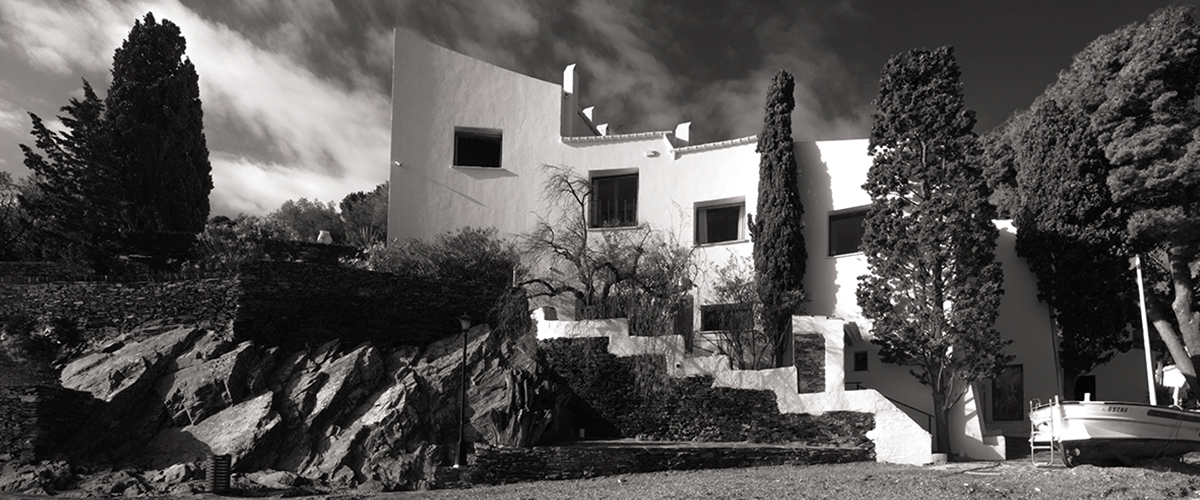For Salvador Dalí, the landscape of his homeland was always an essential feature of his work and outlook on life. He would often proclaim that the Catalan coastline was the most sublime in the world, and the perfect place for someone “to become Dali.” Of Spain, Dalí said “This country is my permanent inspiration.” It is impossible to overstate the importance of the Catalan landscape and the geography of Dali’s homeland on his art and personality.
To help further understand Dali’s beloved environment in all of its grandeur, The Dalí Museum sought out the foremost photographic artist of the Florida landscape, Clyde Butcher. Butcher was asked to produce a series of black & white photographs focusing on three specific regions of Dali’s world, regions that lend themselves to Butcher’s unique abilities to capture the power of light, land and water. Butcher traveled to the village of Cadaqués where Dalí spent summers growing up, Dali’s home in Port Lligat, and the rugged area of Cap de Creus. All three are within close proximity to each other on Spain’s “wild coast,” the Costa Brava.
While Butcher’s photographs are in one sense a tribute and a commentary on Dali’s land, they are also a hybrid, a luminous graft on the stalk of Dali’s imagination. About Dalí, Butcher says “His home reflected his creativity, and it was wonderful to see.” Butcher’s photographs of Dali’s Catalan world bring to life the vistas, inlets and the “geological delirium” which Dalí embraced from his childhood to his death.
“In his photographs, Butcher invites us not only to appreciate the grandeur and beauty that Dalí saw in his region of Spain, but to look with new eyes, to contemplate Dali’s earth and sky from a new perspective, one honed in the robust Florida environment.”
– Peter Tush, Dalí Museum Curator of Education
For Dali, the Costa Brava was everything. His family owned a summer house in Cadaqués, where he contemplated the hallucinatory rocks of Cap de Creus, where he created his extraordinary home of Port Lligat, and where he always returned for renewal.
Cadaqués
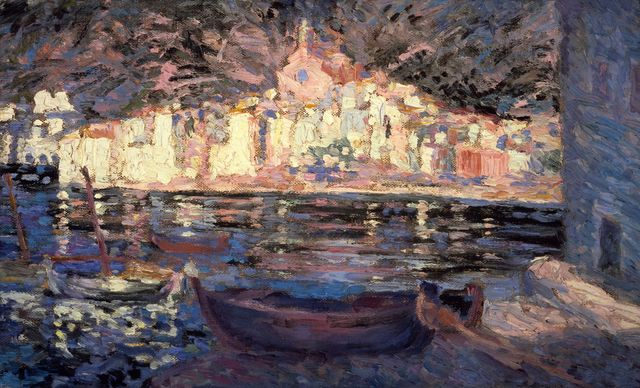
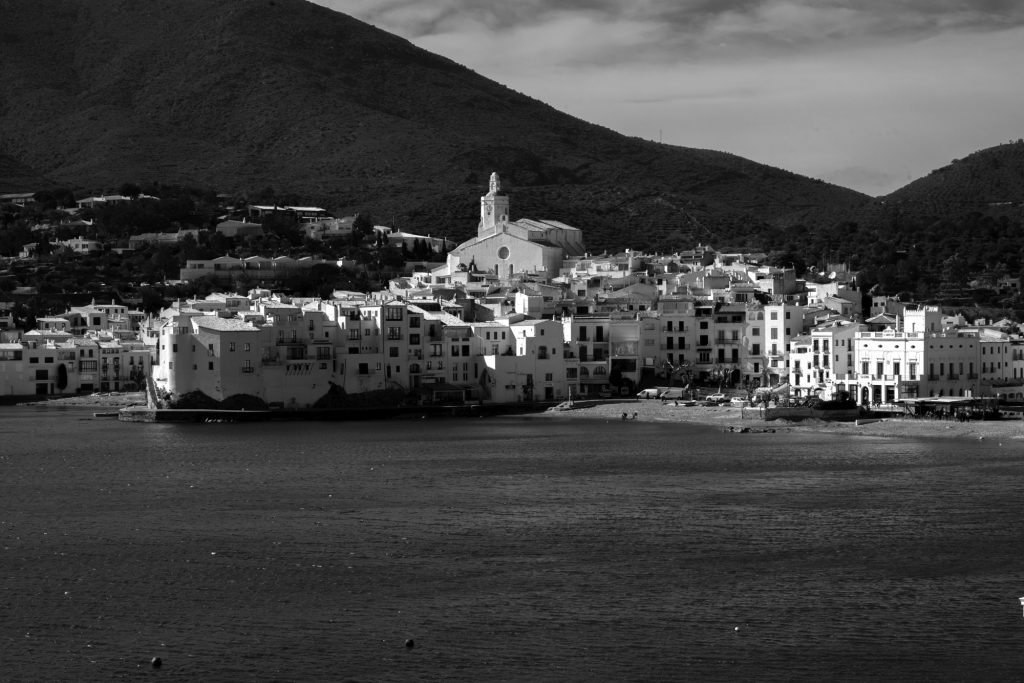
Dalí once said that Cadaqués was the place he adored all his life, claiming to know by heart. Cadaqués is the village of Dali’s youth, where he discovered the remarkable diversity of sea life in the region, from delectable sea urchins to octopuses teeming in the pools and inlets. Cadaqués has become one of the most popular vacation areas in Spain, but when Dalí was growing up, it was a private area known primarily to the fishermen of the region. The looming Mount Paní kept away most visitors because of its treacherous 120-turn road. Cadaqués is built right up along the shore of the Mediterranean. At its center is Santa Maria de Cadaqués, the medieval church built in the 1700s, which is situated among the whitewashed houses of the community.
Isla de S’Arenella en Cadaqués
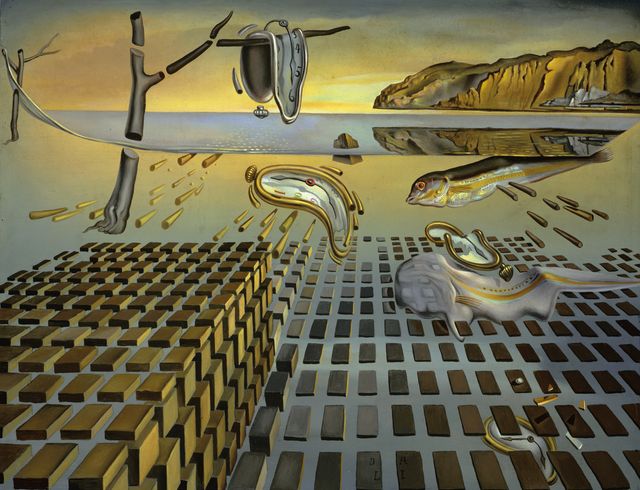
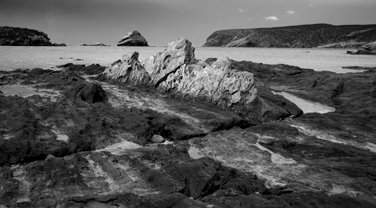
Describing the rugged cliffs of the Catalan coast depicted in The Persistence of Memory, Dalí says, “This picture represented a landscape near Port Lligat, whose rocks were lighted by a transparent and melancholy twilight; in the foreground an olive tree with its branches cut, and without leaves.” This is the same landscape represented twenty years later when Dalí revisited his composition for The Disintegration of the Persistence of Memory (1952-54, The Dalí Museum Collection), where the original melancholy scene of unease becomes a staging ground to contemplate the fear of the atomic bomb.
Butcher’s Plaja S’Arenella photograph returns to the Cucurucuc rock from a different beach, the beach of S’Arenella, located in Cadaqués on the way to Port Lligat. When looking at Butcher’s photo, it becomes clear that this was the location of both Persistence paintings. The horn-like rock pierces the bay again with the long wall-like stretch of Mt. Paní reaching over from the right. Butcher’s photo draws attention to the harsh foreground where the beach gives way to deeply etched stone, at the jagged edge of the Mediterranean.
Cap de Creus

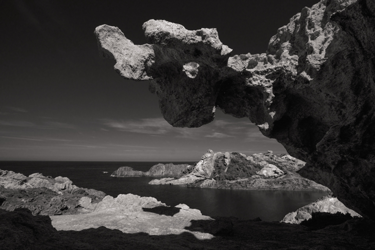
Perhaps the most remarkable area of all of Catalonia, if not all of Spain, is Cap de Creus. Located at the base of the Pyrenees, just 16 miles from the French border, it is the easternmost tip of the Iberian Peninsula. It is a rugged, forbidding, primordial geological area that is now preserved as a national park. Over time, the harsh weather conditions of the region have created a geological fantasia, with remarkable weathered rock formations that dramatically change based on the position of the sun.
One of Dali’s most beautiful and haunting paintings of the rocks is found in Shades of Night Descending (1931, The Dalí Museum Collection). Here Dalí reveals the mineral splendor of the rocks, the pegmatite and granite glowing against the azure sky. Butcher had great difficulty when he arrived for the first day of shooting because of the Tramontana (fierce winds). Cap de Creus proved inhospitable, the ferocious winds nearly ending the shoot before it began. Yet his photographs of Cap de Creus are some of the best in his series. Cap de Creus 5 celebrates one of the most unusual features of the region – a rock outcropping that seems to defy gravity, like some curious sea creature’s head taking in the scene. Again, Butcher’s range of shading is striking, heightening each nook and cranny in the rock’s surface. There are many Dalí paintings from the mid-1930s featuring such jutting rock forms. Dalí painted a series of works where objects like cars are held within these rocky extensions. His dreamlike presentation makes the rocks and objects seem to defy gravity.
“We were in Spain visiting the home environment of Salvador Dalí, and I felt like I was dreaming.”
– Clyde Butcher
The Dalí Museum’s founders, Reynolds and Eleanor Morse, first traveled to Dali’s Spain in 1956. During that trip, they made a profound discovery: Dali’s landscapes were not the product of his overheated imagination, but were real. With this series of photographs, Butcher brings an artist’s perspective to their discoveries. Dali’s painted dreamscapes are now Butcher’s photographed dreamscapes.
Visitors to The Dalí Museum will be able to immerse themselves in stunning images of Dali’s homeland on a grand scale. Clyde Butcher: Visions of Dali’s Spain is on view June 16-November 25, 2018, providing a view of Dali’s surroundings as seen by Florida’s greatest nature photographer.
About the exhibition
The thoughtfully curated collection will feature 41 photos that take viewers on a journey through Catalonia, with images ranging from an intimate 2 feet to a panoramic 8 feet in width. The show will be Butcher’s first photo exhibition of Spain, as well as the first time he has been commissioned to photograph an area that influenced another artist.
Clyde Butcher: Visions of Dali’s Spain is co-organized by The Dalí and Clyde Butcher & the Butcher family, and curated by Museum Curator of Education Peter Tush. This exhibition received support from Johnson PhotoImaging, Inc. and Trenam Law.
